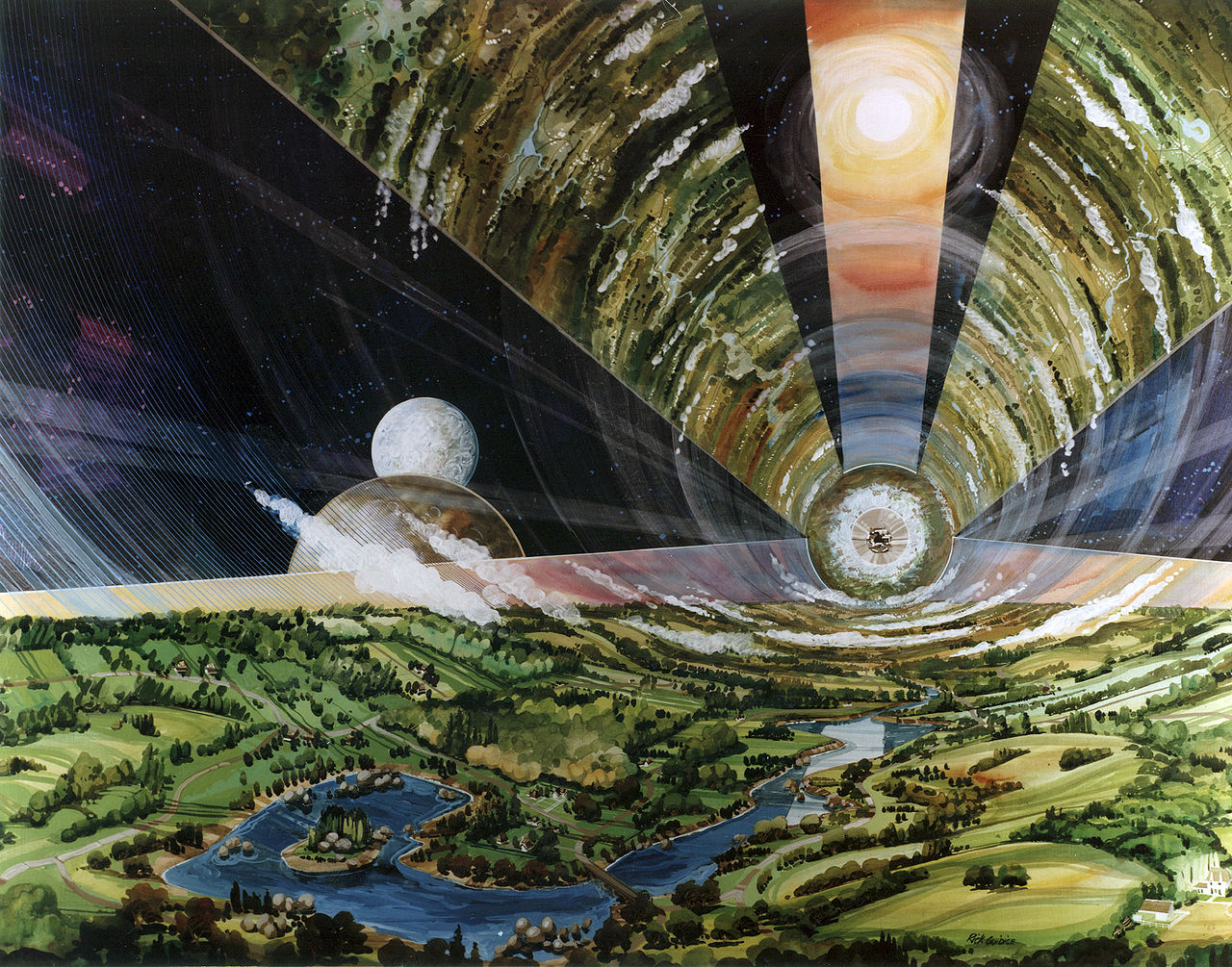
Back in the 70’s, American physicist Gerald K. O’Neill came up with the idea of a space colony consisting of materials extracted from the moon and asteroids. The idea was originally proposed in O’Neill book The High Frontier: Human Colonies in Space while he was teaching physics to undergrads at Princeton. He gave his students one task: to design structures that were suitable for life in outer space. Some of the ideas his student’s came up with inspired O’Neill to start designing something on his own.
One of the most advanced designs in space colonization, the O’Neill Cylinder would consist of a pair of 20-mile-long cylinders, 4 miles in diameter, each with three land areas separated by three windows and three mirrors that would open and close, imitating a cycle of day and night. Each land area would consist of approximately 500 square miles, suitable for millions of people. “The cylinders are always in pairs which rotate in opposite directions, cancelling out any gyroscopic effect that would otherwise make it difficult to keep them aimed toward the sun,” according to the National Space Society. The rotating cylinders provide artificial gravity, and would rotate about 40 times an hour.
So why aren’t we living on the O’Neill Cylinder yet? Well, first off it’s still considered to be extremely fictitious at this point. The habitat would cost billions upon billions of dollars and would require supplies and materials humans don’t have readily at our disposal. The project would take who knows how long and would probably result in a few accidental deaths.
Obviously this is a pipe dream for now, but a boy can wonder what life would be like in a spinning cylinder. Hopefully it would be something like that awful Matt Damon movie!
